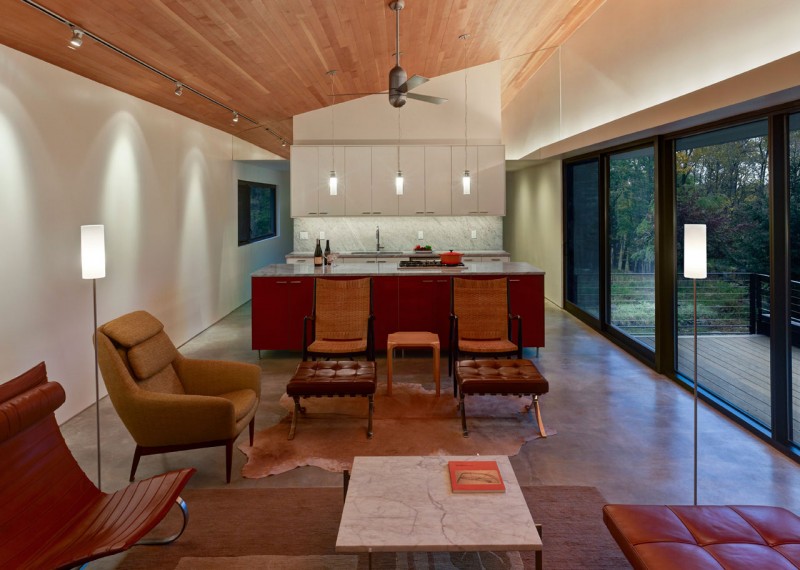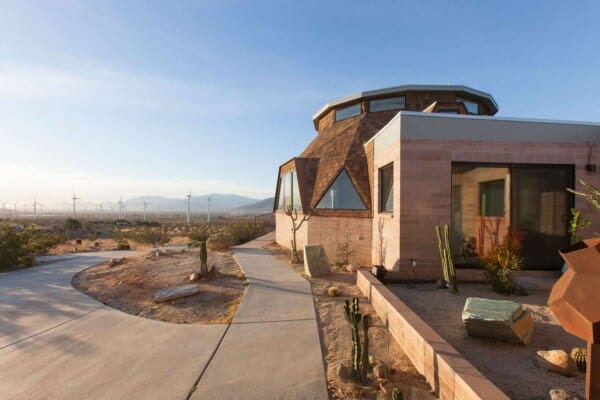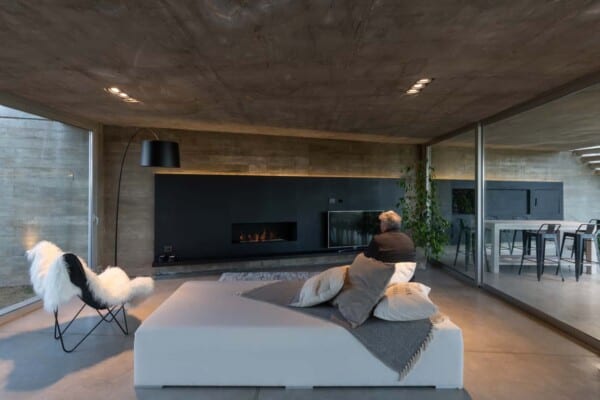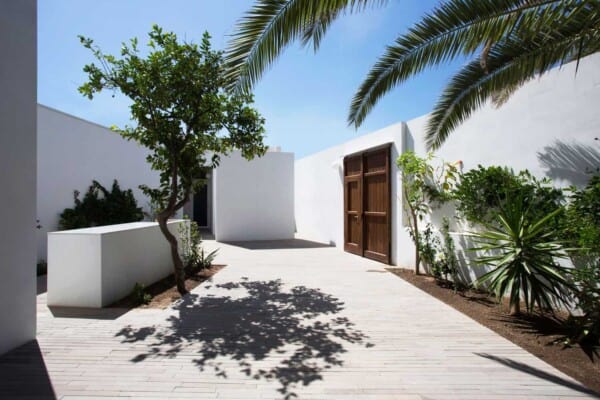Architect Chan-li Lin from studio Rafael Viñoly Architects has designed the Waccabuc House.
Completed in 2011, this two story contemporary home is located in Waccabuc, a hamlet in the town of Lewisboro, Westchester County, New York, USA.
Waccabuc House by Rafael Viñoly Architects:
“The rocks and trees on the 3.25-acre site were the inspiration for this house, located on the top of a hill at the end of a 1,000 foot-long dirt road. The house replaced an abandoned one-story structure whose origins dated to 1954. Being able to climb onto the roof of that structure is what convinced the architects that the majority of living spaces should float one-story above the ground. A veritable tree-house, it enjoys the best of what the site has to offer—trees, views, and light.
Building within the small footprint of the original structure and elevating and cantilevering the larger second floor proved advantageous, minimizing both the site disturbance as well as the development costs. No trees were removed and the existing drive, site walls, well and septic systems were reused. The second floor structure is a pair of lightweight floor-height steel trusses supported on six columns pinned to the rock ledge below. The cantilevered ends extend twenty feet beyond the supports, forming a carport to the east and a covered porch to the west. The first floor is nestled into the existing rock outcroppings and site contours and was constructed using conventional 2×6 wood framing.
The house is situated east-west, with most living spaces enjoying maximum daylight via strategically placed ventilating aluminum windows and south, east and west-oriented aluminum window walls, providing a variety of exposures and views. The second-floor cantilevers provide shade for the first floor. Horizontal brows and shade trees to the west protect the second-floor window walls from rain and summer solar-gain, but allow the lower winter sun to penetrate deep into the house in the winter. Artificial lighting is indirect, emphasizing the structure: the white stucco soffits of the cantilevers and entrance canopy and the sloped wood ceiling of the main living space.
The polished concrete floors on both floors have radiant heat pipes embedded in the structure, providing the primary source of heat. Energy-efficient heat pumps provide supplemental heat and air-conditioning on rare occasions. Spray-foam insulation was used on all perimeter walls, at the roof and between the first and second floors to maximize the thermal efficiency of the structure.”

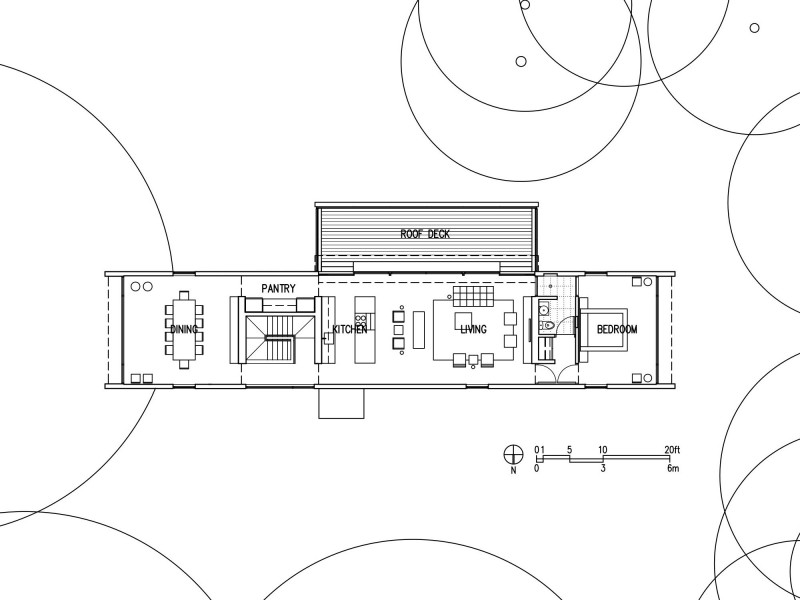
Photos by: Brad Feinknopf
Via ArchDaily









